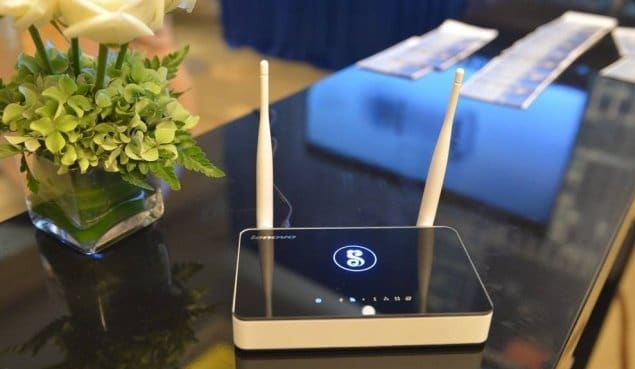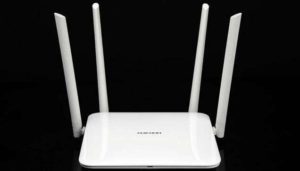
The number of antennas that most consumers are interested in when purchasing a wireless router. The reason is: “The more antennas the wireless router has, the better the WiFi signal.”
Ethernet Routers with many antennas are selling well
In fact, when we open the wireless router product page of the e-commerce website, we can find the top ten wireless router products in sales, and wireless routers with three or more antennas occupy more than half of the positions.
Multiple antennas should be born in MIMO
But now we tell you that multi-antennas have its benefits, but in practice, if the antenna exceeds three, it usually does not make sense in the home scene.
Why do wireless routers have multiple antennas? Let’s first talk about MIMO technology.
The home environment is complex and the signal cannot be transmitted directly
The use environment in the general family is more complicated, and the electrical signals are blocked by the home appliance or the wall so that there is almost no direct signal from the transmitting end to the receiving end.
The wireless signals reflected by various objects in the home form a “multipath transmission” phenomenon, and the data transmitted to the receiving end by different routes will have a delayed phenomenon, so we intuitively feel that the network becomes “card”.
Then there was the “MIMO” transmission technology. With MIMO technology, multi-antenna support is required. The router can divide the data into multiple copies from different antennas and integrate at the receiving end.
Taking 2×2 MIMO as an example, just like two people working at the same time, the original work efficiency is doubled, the wireless speed is improved and the communication quality is significantly improved.
MIMO wireless technology schematic
Both the product of 2 antennas and the product of 3 antennas are designed to match the X*X MIMO mode.
For example, the current mainstream wireless router with 300M+867Mbps transmission rate must have 2×2 MIMO mode, that is, two antennas are sufficient.
There is also a situation in which dual-band wireless routers are gradually becoming popular, with two frequency bands of 2.4 GHz and 5 GHz.
The 2.4GHz band uses 2-4 antennas to achieve 3×3 MIMO mode or even 4×4 MIMO, which enables wireless rates up to 750Mbps. The 5GHz band uses another 2-4 antenna to achieve 3×3 MIMO or 4×4 MIMO effects, achieving higher wireless rates.
What factors affect the WiFi signal strength?
The decisive factor for the strength of the WiFi signal is actually the transmit power of the wireless router.
Countries around the world have regulations on the transmission power of wireless routers, generally not exceeding 100mW, which is 20dBm (2.4GHz band).
Wireless transmit power is the most critical
So we can see that, in fact, according to national standards, the signal strength at the transmitting end is fixed. The other side that determines the strength of the wireless signal is on the user’s receiving device.
If its receiving sensitivity is not high, then the user will feel that the wireless signal is not good, and the actual experience of the Internet will be very poor. In this way, consumers are easily fooled by manufacturers and even waste money to buy “excess” antennas.
Antenna gain supervisor emission direction
So what is the meaning of the antenna gain 3dBi, 5dBi or 7dBi similar? In theory, the larger the antenna gain, the more the wireless signal can be transmitted.
It can be said that the gain of the antenna plays a role in amplifying the wireless signal transmitted by the wireless router and is closely related to the transmission direction of the wireless signal.
In daily life, our common wireless router antenna gains are generally 3dBi and 5dBi, and some products with outstanding ability to penetrate the wall use a 7dBi gain wireless antenna.
In simple terms, the wireless signal transmitted by the 3dBi gain antenna is similar in shape to “()” when the transmit power is the same, much like a semicircle.
The 5dBi antenna emits a signal similar to “<>”, more like a flattened oval.
From the figure, we can see that the higher the gain, the smaller the vertical angle, and the relationship between the coverage area and the shadow angle can be clearly seen.
Therefore, if it is used within a certain range, the gain of 3-5dBi is favorable for signal reception, and it is a mistake to recognize that the antenna is considered to bring better effects.
Conclusion:
Don’t be superstitious about the number of antennas and the strength of the WiFi signal! To improve WiFi coverage, start with the above points!
Original Article Source from https://www.jiaheu.com
